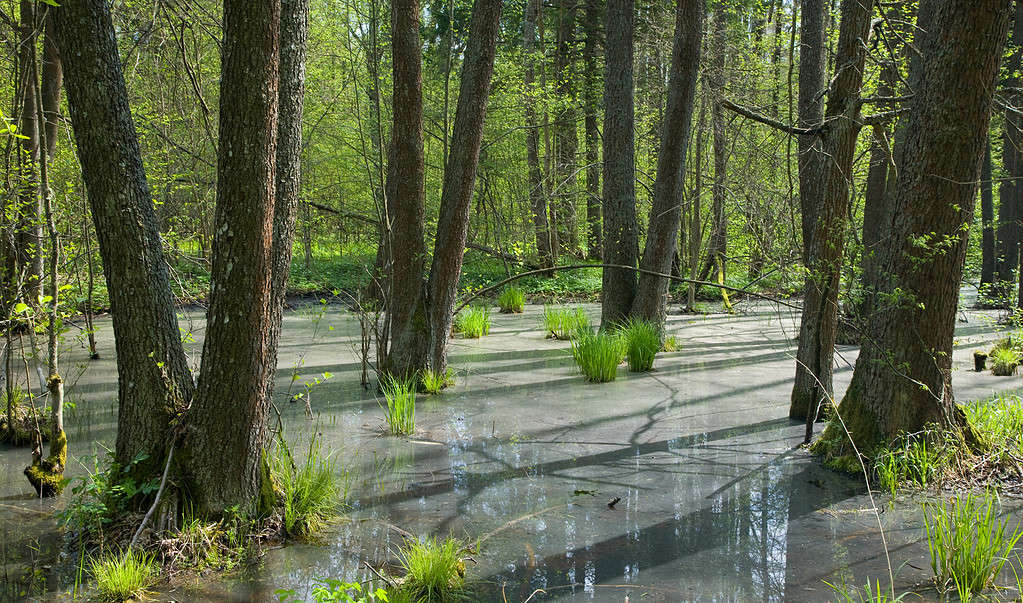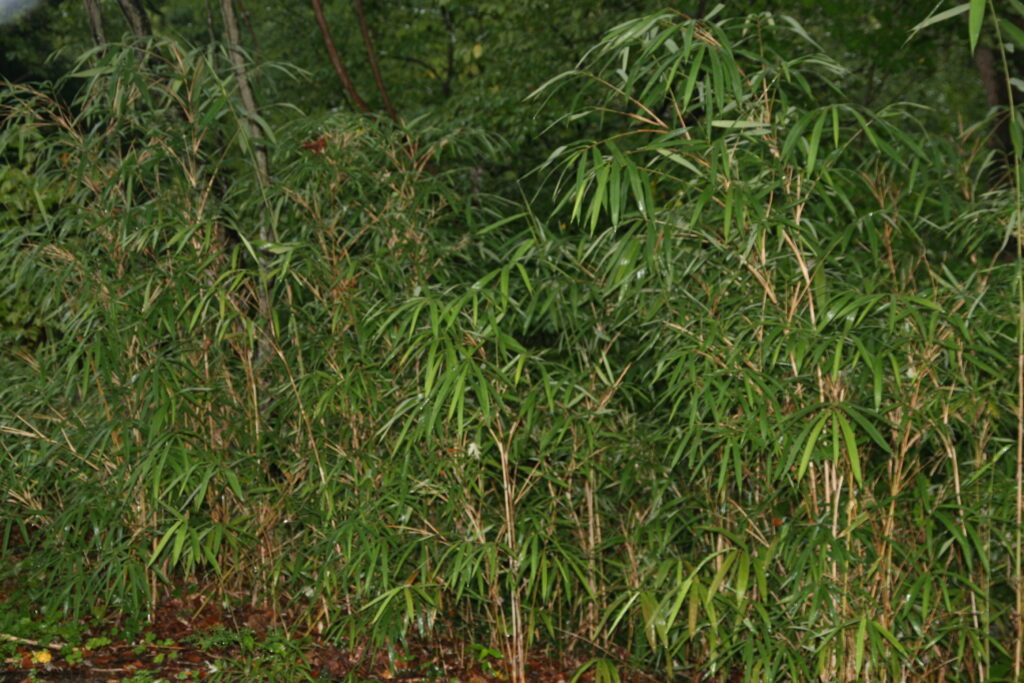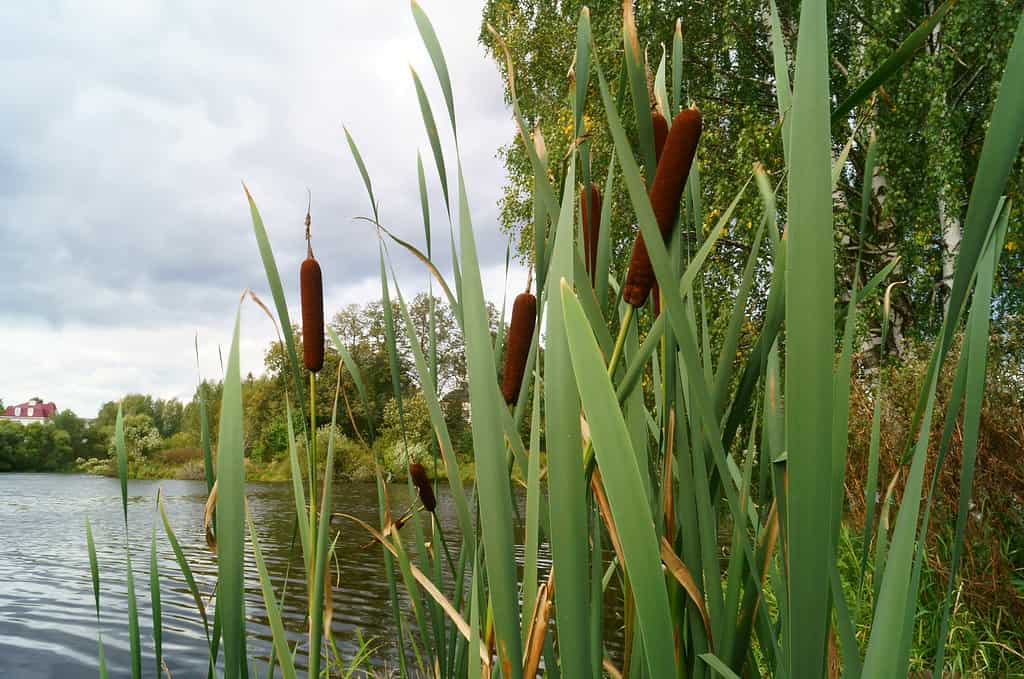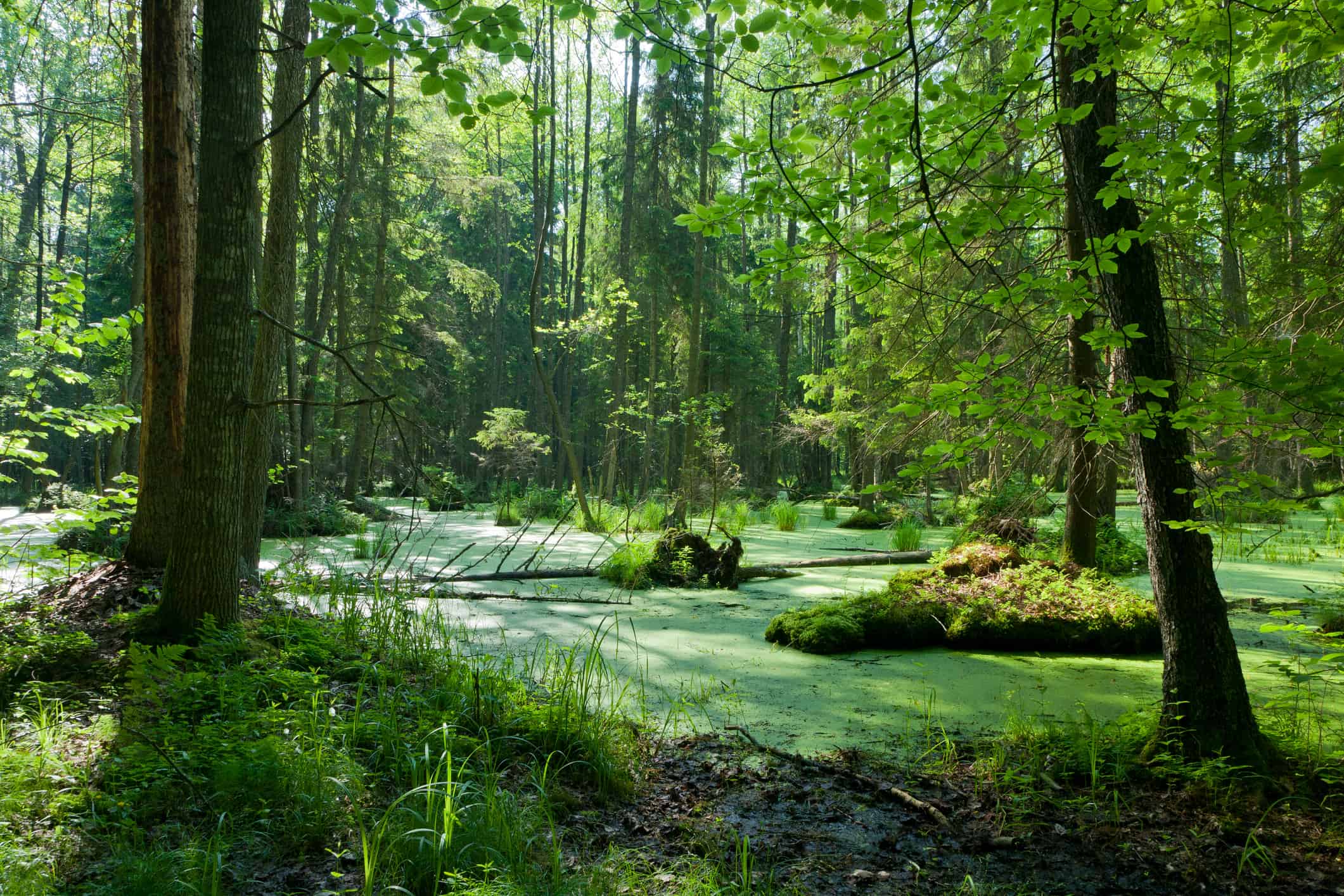Swamps are often overlooked and undervalued by humans, who frequently view them as stagnant and unproductive. That couldn’t be further from the truth. Swamps are among the most diverse and important habitats worldwide, mitigating flooding, filtering and buffering water, and supporting plants and animals of all kinds. In this article, we’ll take a look at some of the incredible plants that develop and maintain these important wetland ecosystems. We’ll learn about the life they support and the ways in which they build habitat while surviving incredibly wet, low-oxygen conditions that accompany flooded environments.
Mangroves (Avicennia sp., Laguncularia sp., Rhizophera sp., etc.)

Red mangroves form thick tangles of trunks and arching roots, trapping nutritious sediment and providing cover to animals of all kinds.
©Sean Lema/Shutterstock.com
Mangroves are some of the world’s most important swamp plants. They inhabit the world’s tropics and subtropics, forming buffers between the oceans and the freshwater sources that feed into them. As they mature and reproduce, mangroves form dense colonies whose roots and stems collect nutritious sediment and organic matter that supports huge populations of decomposers and invertebrate animals. In turn, those organisms support larger swamp-dwelling animals like wading birds, fish, and reptiles.
These crucial habitat builders have developed numerous ways of surviving saline conditions and full root submersion. The red mangrove, Rhizophera mangle, produces long, arching prop roots that keep the entire plant suspended above the water. In doing so, they stabilize the plant against tides and currents and supply submerged root parts with oxygen. The black mangrove, Avicennia germinans, handles submersion in a different way. It produces special roots called pneumatophores which rise above the water’s surface. These act as “snorkels”, allowing the mangrove to breathe underwater. Black mangroves can also filter seawater internally, expelling otherwise harmful salt through their leaves.
2. Bald cypress (Taxodium distichum)

Bald cypress trees develop impressively wide trunks and characteristic knees that help their roots breathe underwater.
©Laurens Hoddenbagh/Shutterstock.com
Where mangroves build coastal swamp habitat, bald cypress trees (Taxodium distichum) create habitat and dominate swamps further inland. They are very distinctive, with older trees developing a wide, conical base that affords them greater stability in shifting, muddy soil. While bald cypress can grow in dry conditions, they frequently grow with their roots partially or entirely submerged for long parts of the year. To cope with this, they develop special conical roots called knees. They behave much like the pneumatophores of the black mangrove, growing straight up and out of the water and muck, allowing the submerged parts to breathe.
Bald cypress trees are very long-lived, and some specimens are among the oldest trees in the world. One impressive specimen, growing along the Black River in North Carolina, belongs to a lush, old-growth cypress swamp where it has been developing habitat for more than 2,600 years! What’s even more amazing is that some of its neighbors are nearly as old, aging 2,000 years or older.
3. Alders (Alnus sp.)

By stabilizing swampy soil and supporting nitrogen-fixing bacteria, alders build a strong base for other smaller swamp plants.
©Aleksander/iStock via Getty Images
Alders are trees or large shrubs whose roots can handle long-term submersion. They play important roles in swamp environments, stabilizing and adding copious amounts of nitrogen to the soil. Some species produce many stems that tend to collect passing debris and sediment. As a result, they can form small islands around their bases which support other smaller plants and animals. Their boughs also support vining plants like Clematis and Lonicera, or honeysuckle.
Alders tend to be quite aggressive in their growth habit. They grow quickly and form relatively low but wide canopies that prevent all but a few other shrubs and trees from thriving. In many cases, alders dominate entire swamp ecosystems. As they grow and reproduce, they can form dense thickets that help slow-moving water and provide valuable swamp habitat for birds, reptiles, fish, and amphibians.
4. River Cane (Arundinaria sp.)

River cane, unlike many bamboo, grow exceptionally well along the edges of seasonal swamps and floodplains.
©Photo by David J. Stang, CC BY-SA 4.0 <https://creativecommons.org/licenses/by-sa/4.0>, via Wikimedia Commons – Original / License
While most bamboo species don’t fare well in damp environments, some thrive at the edges of the rich, wet soils that seasonal flooding creates. Two species in particular, Arundinaria tecta and Arundinaria gigantea are quite important in this role and can survive temporary inundation longer than most bamboos. The former, A. tecta, even has specialized air canals in its rhizomes that help keep them aerated underwater. While they cannot survive permanent inundation, they provide exceptional erosion control in seasonal flood plains and along wetland edges.
Native to North America, these river cane species once covered vast swathes of land. They were so prolific that they represented their own type of ecosystem, known as canebrakes. Where they had established dense thickets, they would slow seasonal floodwaters and trap nutrient-rich sediment. In doing so, the river cane enriched the soil and provided food, shelter, and breeding ground for many unique animals. Though river cane still exists widely today, their populations have sharply declined. Due to mass clearing and unsustainable agricultural and grazing practices introduced by European colonizers, canebrakes today are virtually nonexistent.
5. Cattail / Bulrush (Typha sp.)

Dozens of cattail species dominate and stabilize wetland habitats worldwide.
©Panchuali/Shutterstock.com
Cattails are important early colonizers of wetland environments and persist in them through multiple successional stages. Frequently, due to their rapid spread, both sexual and asexual, they remain the dominant species in the ecosystems they create. Where most species of swamp plants, like the river cane and the bald cypress, require dry periods to survive and successfully reproduce, cattails can survive flooding indefinitely. This is due to special spongy, or aerenchymatous, stems that allow oxygen to travel very easily through the body of the plant. Because gas exchange occurs so easily throughout the stems, the creeping rhizomes can breathe under multiple feet of water!
These tough swamp plants are excellent at stabilizing the soil, and their long leaves and tall reeds provide great cover for wetland wildlife. Wading birds, small mammals, fish, and amphibians all utilize cattail swamps for shelter and breeding ground, and many even utilize the plants themselves as food. The rhizomes are very nutrient dense and, in the fall, cattails produce dense heads of windborne seeds that feed wildlife of all kinds.
Thank you for reading! Have some feedback for us? Contact the AZ Animals editorial team.








